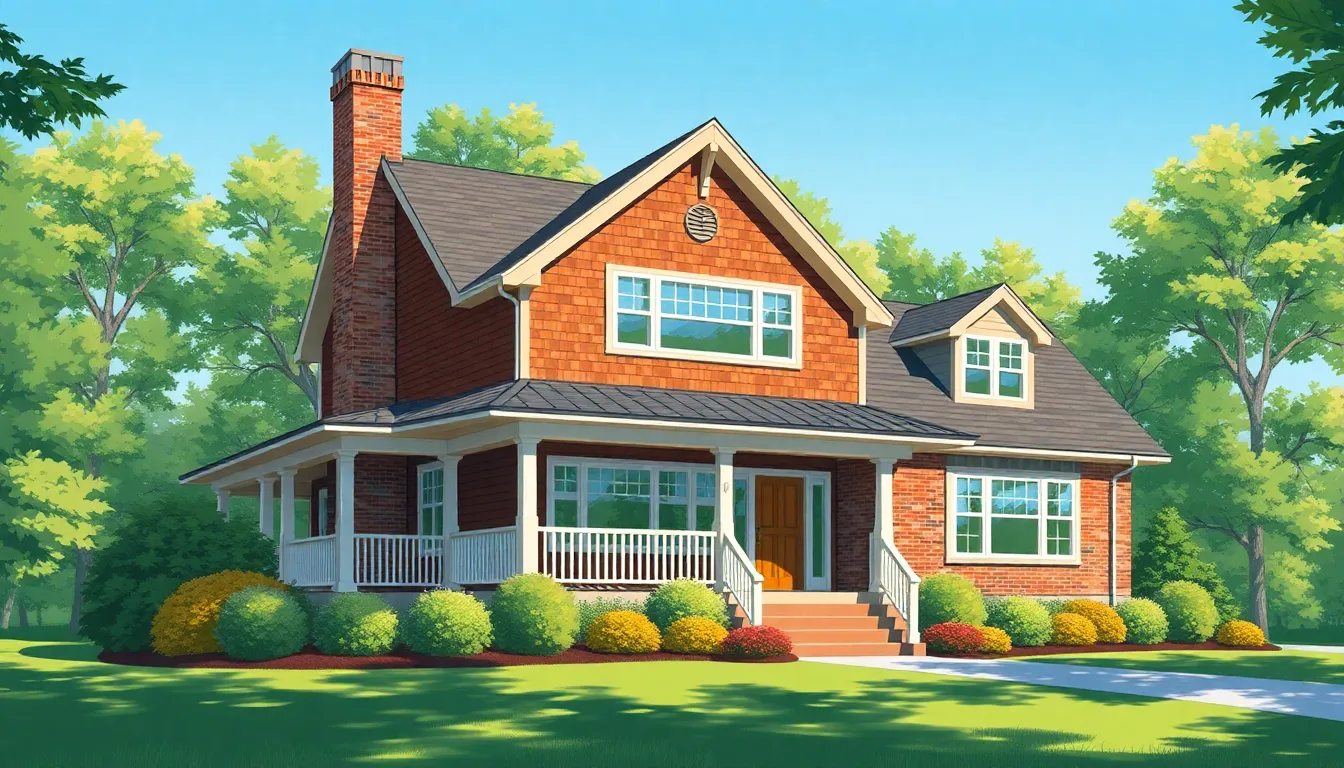In the picturesque Green Mountain State, home isn’t just where the heart is—it’s where the snowflakes land and the maple syrup flows. But with all that natural beauty comes a few surprises, like the occasional snowstorm that could turn your roof into a winter wonderland… or a winter nightmare. That’s where Vermont home insurance steps in, ready to save the day faster than you can say “I love my cozy cabin.”
Imagine sipping hot cocoa while knowing your home is protected from the unexpected. Whether it’s a rogue raccoon trying to claim your shed or a surprise leaky roof, having the right coverage makes all the difference. With a dash of humor and a sprinkle of professionalism, let’s dive into the world of Vermont home insurance and discover how it can keep your slice of paradise safe and sound.
Table of Contents
ToggleOverview of Vermont Home Insurance
Vermont home insurance provides essential protection for homeowners against various risks. Policies typically cover damages due to fire, theft, and natural disasters, including the heavy snow typical in the region. Coverage options vary, allowing homeowners to customize plans that fit their needs.
Many insurers offer specialized policies tailored for Vermont’s unique environment. For instance, some policies include protection against water damage from rapid snowmelt or flooding. Homeowners can also find liability coverage, which safeguards them in case of accidents that occur on their property.
The average premium for Vermont home insurance ranges from $800 to $1,200 annually, with variations based on specific factors. Location, home age, and building materials affect rates significantly. Furthermore, discounts may be available for homeowners who install security systems or have a claims-free history.
Vermont law doesn’t require home insurance; however, lenders often mandate it if a mortgage is involved. Policies typically cover personal property, structural damage, and additional living expenses during repairs. Homeowners can opt for extended coverage that includes valuable personal items like jewelry or artwork.
Understanding the specifics of Vermont home insurance helps homeowners make informed decisions. Reading policy details and discussing options with representatives ensures adequate protection. Familiarity with state regulations and common risks enhances overall preparedness.
Types of Coverage Available

Vermont home insurance offers various coverage options to protect homeowners against different risks.
Dwelling Coverage
Dwelling coverage protects the physical structure of the home. It includes various types of damages caused by fire, storms, or vandalism. A standard policy typically covers the home itself, including attached structures like garages or porches. Homeowners can modify this coverage to add protections against specific risks like flooding from rapid snowmelt. It’s essential to evaluate home replacement costs to ensure adequate coverage levels.
Personal Property Coverage
Personal property coverage safeguards belongings within the home. This includes furniture, electronics, clothing, and other personal items. A policy may cover damages due to theft or disasters affecting the home. Homeowners can customize their coverage limits based on the value of their possessions. Specialized endorsements exist for high-value items such as jewelry or collectibles.
Liability Protection
Liability protection covers legal expenses and damages if others get injured on the property. This can include incidents such as slip-and-fall accidents or dog bites. Policies typically provide a minimum coverage limit, but higher limits can be purchased for additional security. Protecting against potential lawsuits ensures peace of mind for homeowners. Additional coverage options for personal umbrella policies are available to further enhance liability protection.
Factors Influencing Premiums
Various elements affect home insurance premiums in Vermont. Understanding these factors helps homeowners make informed decisions.
Location and Geography
Location significantly impacts premiums. Homes in areas prone to natural disasters, such as flooding or snowstorms, often face higher rates. Insurance companies assess regional risks and adjust premiums accordingly. Urban areas generally experience different considerations than rural locations, particularly concerning crime rates and emergency services. Proximity to fire stations can lower costs, while homes situated in flood zones may incur additional fees for necessary coverage.
Property Type and Age
The type and age of a property also influence premium rates. Newer homes typically feature modern building materials and construction methods, reducing vulnerability to damage. Older properties may lack these advancements, leading to increased premiums. Insurers consider construction types, such as frame versus brick, when calculating rates. Additionally, updates or renovations can improve safety features, potentially lowering premiums further.
Coverage Amount
Choosing the right coverage amount plays a crucial role in determining premiums. Higher coverage levels lead to increased premiums, as replacement costs for structures and personal belongings rise. Homeowners should evaluate their possessions accurately to avoid overpaying for unnecessary coverage. Selecting a policy that aligns with actual needs ensures cost-effectiveness while maintaining adequate protection. Balancing coverage amount with overall costs directly impacts the affordability of premiums.
Tips for Choosing the Right Policy
Selecting the right home insurance policy in Vermont requires careful consideration of various factors. Homeowners benefit from an understanding of their specific needs.
Assessing Your Needs
Determine coverage based on property value and individual circumstances. Homeowners should evaluate potential risks unique to Vermont, like heavy snow and flooding. Consider the age of the home, as older properties may require different protections compared to newer builds. Identify personal belongings that need protection, ensuring that coverage limits align with their total worth. This assessment establishes a foundation for selecting an appropriate policy.
Comparing Quotes
Collect multiple insurance quotes to identify competitive rates. Use online tools or consult agents to obtain estimates for comparable coverage. Ensure the coverage details match across quotes so comparisons reflect true costs. Analyze any available discounts for security systems or claims-free histories, which may lower premiums. Evaluating different quotes helps find the most suitable policy while balancing value and coverage.
Understanding Policy Terms
Review policy documents to grasp important terms and conditions. Specific coverage definitions influence what homeowners can expect in case of a claim. Check for exclusions, as some policies may not cover certain situations like earthquakes or specific types of water damage. Familiarity with deductible amounts is crucial, as higher deductibles often lead to lower premiums. Communicating with agents about any unclear terms guarantees a smooth insurance experience.
Vermont homeowners have a unique opportunity to protect their investments through tailored home insurance policies. By understanding the various coverage options and factors influencing premiums, they can choose the best protection for their specific needs. With the potential for natural challenges like snowstorms and flooding, having adequate coverage ensures peace of mind.
Taking the time to evaluate personal property and comparing quotes can lead to both comprehensive protection and financial savings. Ultimately, securing the right home insurance is a proactive step towards safeguarding one of life’s most significant investments.


